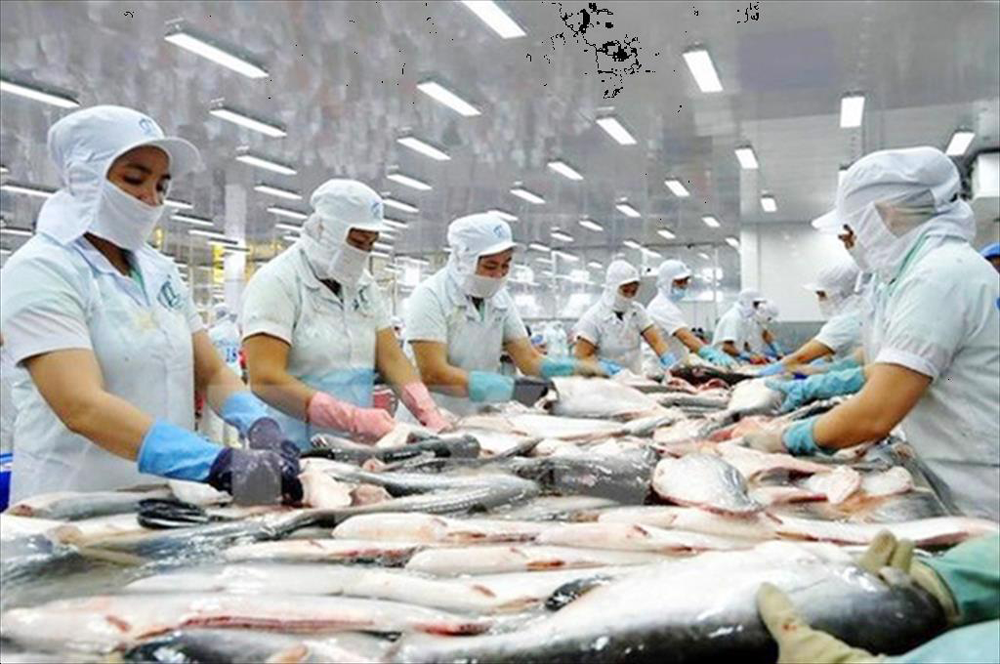Vietnam Seafood
Vietnamese pangasius has an advantage in China
Some experts believe that pangasius has an advantage in China, with the potential for explosive growth if it replaces other ingredients in some dishes.
Despite a double-digit decrease in pangasius imports from Vietnam to China in the first three quarters of this year, Mr. Chen Xindong, a veteran expert in the industry, believes that the demand for high-quality fish fillets still has significant growth potential in China. Mr. Chen Xindong is currently the General Director of Octogone Pangasius Distribution Company, a subsidiary of Vinh Hoan in China.
Customs data shows that China imported 127,000 tons of frozen pangasius, worth $264 million in nine months this year, down from 206,000 tons and $510 million last year.
But Mr. Chen believes that pangasius has an advantage in China, with the potential for explosive growth if it replaces other ingredients in some dishes.
At the recent China Fisheries and Seafood Fair held in Qingdao, a representative of import company Qingdao Meichu Foods said pangasius cooked with Sichuan pickles has become one of the most popular dishes in China. Mr. Chen said the market is being driven by dishes such as braised pangasius with Sichuan pickles, grilled fish, and hot pot.
In hot pot, deboned pangasius still dominates local boned snakehead fish. Mr. Chen said most have now returned to pangasius: “If other dishes can be replaced with pangasius, sales will likely grow explosively.”
Signs of market recovery
Mr. Chen added that there are signs that the Chinese pangasius market is recovering. Pangasius sales began to recover in July and continued to increase throughout August and September, thanks to the summer vacations of students, he explained. In addition, collective kitchens have reopened after a long period of prohibition due to COVID-19.
He said China’s recovering food service industry is also consuming pangasius despite relatively low prices. Pangasius consumption remains stable, but efforts to sell off higher-priced inventory from last year have resulted in overall lower profits.
Meanwhile, sales during China’s National Day holiday in October fell short of expectations.

Mr. Chen added that the discharge of treated radioactive wastewater from Japan’s Fukushima nuclear plant does not affect the Chinese pangasius market. Many consumers assume that the ingredients in Japanese restaurants come from Japan, but in reality, their salmon comes mainly from Norway and Chile.
China’s farmed pangasius is not a threat.
Meanwhile, Vietnamese producers are still not very concerned about the risk of losing Chinese customers, although pangasius producers in Hainan and Guangdong are entering the market.
Mr. Lin Xiaowen, General Manager of Hainan Xiangtai Fish, said his company recently overcame challenges in pangasius farming and discovered new techniques after 4 years of trial farming.
Xiangtai, China’s largest tilapia processor, is a key player in Hainan’s fledgling pangasius industry. The company has a joint venture to produce pangasius breeds in Hainan and has developed specialized feeds and farming methods suitable for the province. Mr. Lin hopes Xiangtai’s pangasius output will reach 10,000 tons this year.
But Mr. Lin admitted that even in climatic conditions similar to Hainan, the size of farmed pangasius is generally smaller than that of Vietnam. He said that currently, China’s domestic pangasius cannot compete directly with imports from Vietnam.
(Source: https://seafood.vasep.com.vn/)



 Tiếng Việt
Tiếng Việt